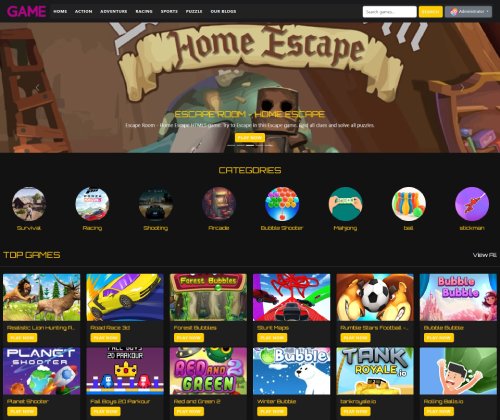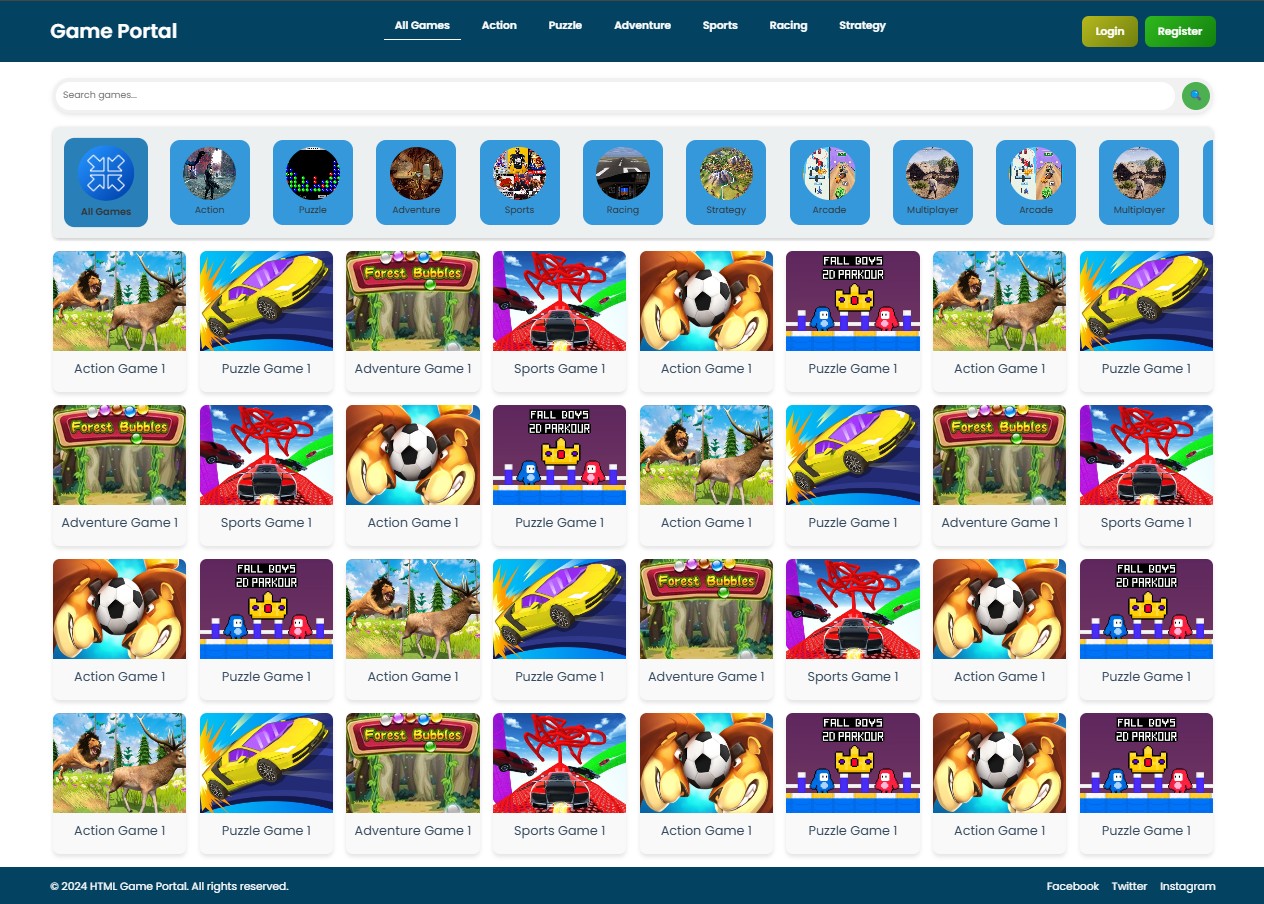Puzzle Games: The Ultimate Mind-Bending Experience
Published on: 29 September 2024

Puzzle games have been a popular genre in the gaming world for decades, captivating players with their intriguing mechanics, brain-challenging tasks, and rewarding sense of accomplishment. Whether played casually or competitively, puzzle games offer a unique form of entertainment that stimulates both cognitive function and creativity. From classic board-style puzzles to the latest digital releases, the genre spans a vast variety of game types, each offering a different way to engage and challenge the mind.
In this article, we’ll dive into the different kinds of puzzle games, explore why they are so satisfying to play, and highlight some of the most popular puzzle games you can enjoy right now.
The Appeal of Puzzle Games
At their core, puzzle games are designed to test the player’s problem-solving skills, memory, and sometimes, speed. Unlike other gaming genres that rely on action, reaction times, or high-intensity battles, puzzle games allow players to approach challenges at their own pace, carefully analyzing situations to come up with solutions.
Here are some reasons why puzzle games are so beloved:
Mental Stimulation
Puzzle games encourage cognitive activity. They require players to think critically, analyze patterns, and anticipate results, making them an ideal exercise for the brain. Completing challenging puzzles offers a satisfying mental workout, which can also improve memory and problem-solving skills over time.Satisfaction of Accomplishment
The moment when a difficult puzzle is solved delivers a rush of satisfaction. Puzzle games provide tangible rewards for perseverance, allowing players to experience the joy of overcoming obstacles. The sense of achievement makes these games addictive and keeps players coming back for more.Variety and Complexity
Puzzle games come in an incredible variety of styles and difficulty levels. From simple, calming puzzles to complex, multi-layered problems that can take hours (or even days) to solve, there’s a puzzle game to suit every skill level and preference. This diversity allows players to find a perfect match for their current mood and challenge tolerance.Relaxation and Focus
While some games ramp up adrenaline levels, puzzle games often have a calming effect. Many feature soothing music, visually appealing designs, and a pace that allows players to concentrate and relax. This makes them an excellent choice for winding down after a busy day or when you’re looking for a break from more intense gaming experiences.Portable and Accessible
Many puzzle games are easily accessible across different platforms, including mobile devices. The convenience of having a game that’s mentally stimulating and enjoyable in your pocket makes it easy to play during commutes, breaks, or whenever you have a few minutes to spare. Whether you’re using a smartphone, tablet, or console, puzzle games are typically designed for quick, drop-in/drop-out gameplay, perfect for both short and long sessions.
Types of Puzzle Games
The puzzle genre is incredibly diverse, offering games that appeal to different preferences and skill levels. Below are some popular types of puzzle games that provide hours of entertainment:
1. Match-Three Puzzle Games
One of the most popular sub-genres, match-three puzzle games require players to align three or more identical items, such as gems, candies, or tiles, to clear them from the board. These games often feature power-ups, combos, and different objectives that keep the gameplay interesting.
Popular Examples:
- Candy Crush Saga: Perhaps the most famous of match-three puzzle games, Candy Crush offers hundreds of levels, each with a unique layout and objective. Players need to match candies to complete tasks such as clearing jellies or collecting ingredients.
- Bejeweled: A pioneer of the match-three genre, Bejeweled challenges players to swap adjacent gems to form matches, clearing the board and earning points.
2. Logic-Based Puzzle Games
Logic-based puzzles challenge the player’s reasoning and deductive skills. These games often involve minimal instructions, requiring players to figure out the mechanics as they go. As the levels progress, the puzzles become more complex, demanding a higher level of thought and strategy.
Popular Examples:
- Sudoku: A timeless favorite, Sudoku challenges players to fill a 9x9 grid with numbers so that every column, row, and 3x3 subgrid contains the digits 1 through 9 without repetition. It’s a simple concept, but solving a tricky Sudoku puzzle can take deep concentration and logical deduction.
- Monument Valley: This visually stunning game uses optical illusions and intricate architecture to create a series of puzzles that players must navigate by manipulating the environment.
3. Word Puzzle Games
Word puzzle games are perfect for those who enjoy language challenges. These games typically involve forming words from scrambled letters or solving crossword-like puzzles. Word games not only test your vocabulary but also your ability to spot patterns and think critically.
Popular Examples:
- Words With Friends: A multiplayer word game similar to Scrabble, Words With Friends allows players to compete by forming words on a shared board. The strategic placement of words earns points, and the game can be played asynchronously with friends or strangers.
- Wordscapes: This relaxing word puzzle game combines word-finding challenges with beautiful landscapes. Players must connect letters to form words and fill in crossword-style grids.
4. Physics-Based Puzzle Games
Physics-based puzzle games rely on realistic physics to create challenges where players must manipulate objects, environments, and forces like gravity. These games often require players to think outside the box to solve puzzles by experimenting with different approaches.
Popular Examples:
- Angry Birds: A well-known physics-based puzzle game where players launch birds from a slingshot to knock down structures and defeat enemy pigs. The game’s success lies in its simple mechanics combined with the complexity of each level’s design.
- Cut the Rope: This game revolves around cutting ropes in the correct order to guide candy into the mouth of a little green creature named Om Nom, while using physics to solve each puzzle.
5. Jigsaw Puzzle Games
Jigsaw puzzle games offer the traditional experience of piecing together images but in a digital format. These games often allow players to choose the number of pieces and difficulty, providing a flexible and relaxing experience.
Popular Examples:
- Jigsaw Puzzle Collection HD: This game offers thousands of jigsaw puzzles with varying themes, from landscapes to animals. Players can adjust the difficulty by changing the number of pieces and enjoy the satisfying process of fitting pieces together.
6. Hidden Object Puzzle Games
In hidden object puzzle games, players are tasked with finding a list of items hidden within complex scenes. These games require sharp observational skills and often feature storylines that unfold as players progress through the levels.
Popular Examples:
- Hidden City: In this game, players explore mysterious locations, searching for hidden objects while uncovering secrets and solving a deeper mystery.
- June’s Journey: Set in the 1920s, this hidden object game follows June Parker as she unravels a thrilling family mystery. Players solve puzzles by locating hidden objects across beautifully designed scenes.
Puzzle Games to Try Right Now
If you're ready to dive into the world of puzzle games, here are some excellent options to explore:
- Tetris: A classic that has been entertaining gamers for decades, Tetris challenges players to fit falling shapes into rows, clearing them as quickly as possible.
- Portal 2: This physics-based puzzle game tasks players with using a portal gun to solve intricate puzzles involving physics, momentum, and spatial reasoning.
- Lumosity: Designed to train your brain, Lumosity offers a wide variety of cognitive puzzles, focusing on memory, attention, and problem-solving.
Conclusion
Puzzle games offer a rich and rewarding gaming experience for players of all ages. Whether you enjoy match-three challenges, logic-based puzzles, or physics-based trials, there’s a puzzle game out there that’s perfect for you. These games are not only fun but also beneficial for mental stimulation, focus, and relaxation. So next time you're looking for something new to play, give a puzzle game a try—you might find yourself hooked!




